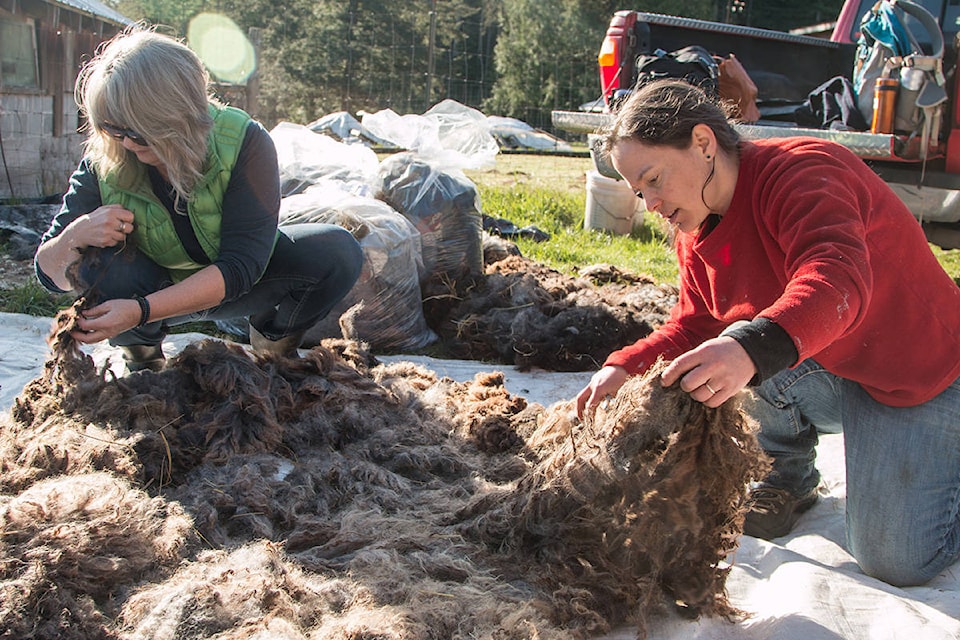Are you a lover of wool and local fibre? Interested in raising sheep, llama or alpaca for wool and looking for support?
The Mid Island Farmers Institute is hosting its November meeting on the topic of the Vancouver Island Fibreshed, Nov. 21 at 7 p.m. at the Merville Hall, 1245 Fenwick Rd. The meeting is free for members with a $5 charge for non-members. Tea and snacks will be served.
A fibreshed is a geographic region that provides all the resources that go into the making of textiles, including animal or plant-based fibres, dyes, processing and manufacturing. Lynda Drury will be giving a short presentation on Vancouver Island Fibreshed, and the Fleece Producer Inventory and Needs Assessment Research that she and Amy Crook are in the process of completing.
In February, Drury and Crook started to identify sheep, llama and alpaca fleece farmers on Vancouver Island and the Gulf Islands. They delved into the reasons why most farmers burn or compost the fleece. They looked at how this situation could be changed. This research is in part funded by Agriculture and Agri-Food Canada, and the provincial government. The program is delivered by the Investment Agriculture Foundation of B.C.
Fleece is seen as a “fun” thing or a “labour of love” on hobby farms. Some raw fleece is being sold, usually at low prices at craft events, farmers’ markets and at the farm gate. Inca Dinca Do Farm & Fibery is able to process fleece efficiently, and is looking into creative and innovative uses for the fleece. The new mill owner is reiterating what we have been told before. Garbage in means garbage out. Improving fleece quality is essential and finding uses for low-quality fleece is added value.
Fleece “waste” may prove to be “gold” in providing resilience to climate change. We saw indigo, a tropical plant thriving in beds where the delicate plant roots were sandwiched between layers of wool to maintain moisture in a dry landscape. Fleece waste is being used as hanging basket material and pelleted for use as an organic soil amendment. The mill is looking into getting that happening on the island.
The MIFI spoke to Canadian brands and designers looking for fibre in a market where “locally produced,” “sustainability” and “natural fibre” are once again becoming part of the apparel story.
It was approached by a dryer ball company that’s moved to Vancouver Island. The mill is producing a cord spun yarn which they believe can utilize lower quality fleece, and be used for making rugs and baskets. Felted wool uses are growing as a textile for shoes, garden protection, insulation and more.
There are emerging markets for fleece and markets that need to be developed. Consumers need to be educated about farming, sustainability and local product options. Pretty soon the mill will be spinning local yarn which can be a game changer.
For more information, contact Arzeena Hamir at midislandfarmersinstitute@gmail.com or (250) 702 5657, or visit the Mid Island Farmers Institute’s Facebook page.
